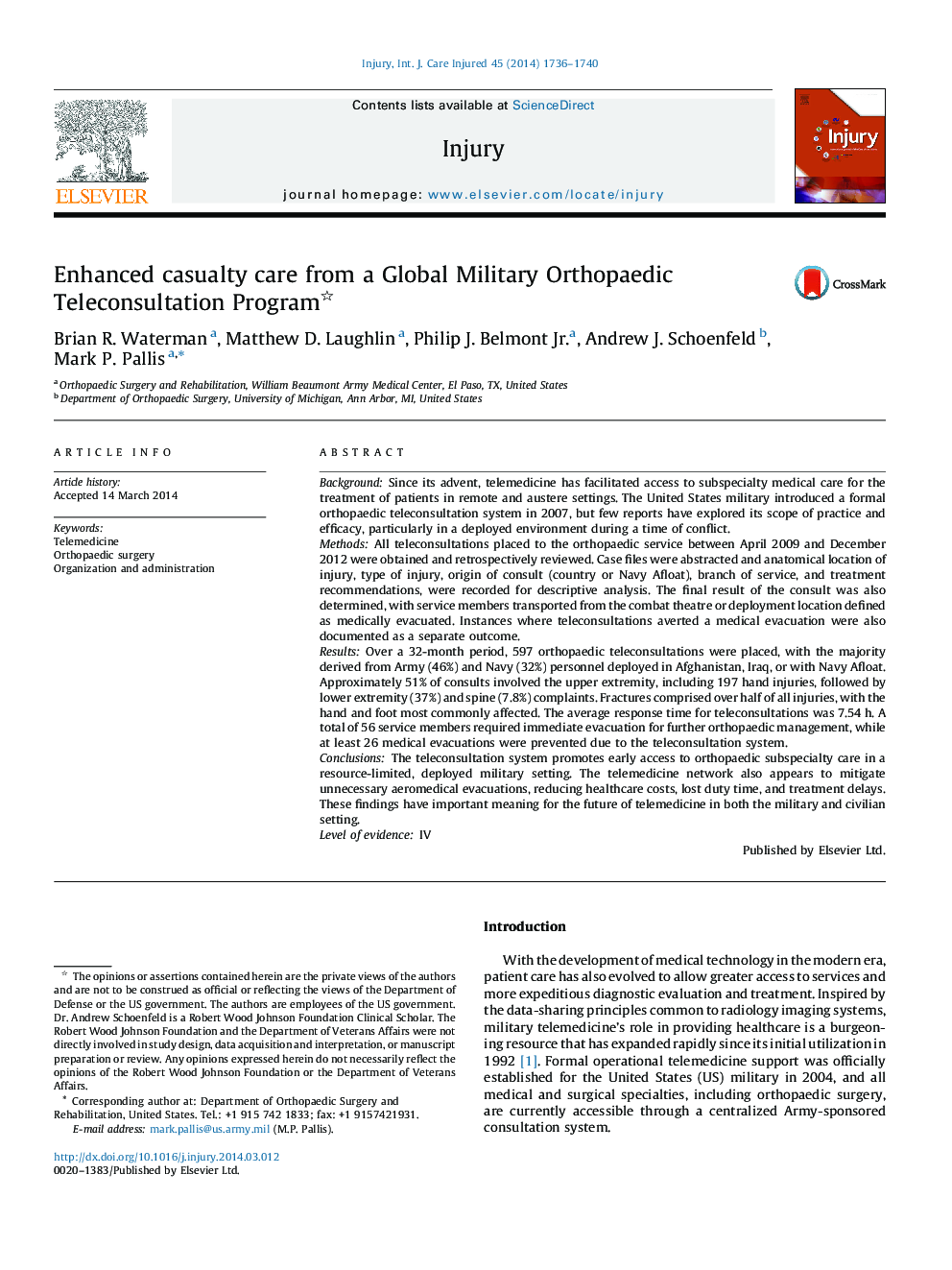| کد مقاله | کد نشریه | سال انتشار | مقاله انگلیسی | نسخه تمام متن |
|---|---|---|---|---|
| 6083873 | 1206010 | 2014 | 5 صفحه PDF | دانلود رایگان |

BackgroundSince its advent, telemedicine has facilitated access to subspecialty medical care for the treatment of patients in remote and austere settings. The United States military introduced a formal orthopaedic teleconsultation system in 2007, but few reports have explored its scope of practice and efficacy, particularly in a deployed environment during a time of conflict.MethodsAll teleconsultations placed to the orthopaedic service between April 2009 and December 2012 were obtained and retrospectively reviewed. Case files were abstracted and anatomical location of injury, type of injury, origin of consult (country or Navy Afloat), branch of service, and treatment recommendations, were recorded for descriptive analysis. The final result of the consult was also determined, with service members transported from the combat theatre or deployment location defined as medically evacuated. Instances where teleconsultations averted a medical evacuation were also documented as a separate outcome.ResultsOver a 32-month period, 597 orthopaedic teleconsultations were placed, with the majority derived from Army (46%) and Navy (32%) personnel deployed in Afghanistan, Iraq, or with Navy Afloat. Approximately 51% of consults involved the upper extremity, including 197 hand injuries, followed by lower extremity (37%) and spine (7.8%) complaints. Fractures comprised over half of all injuries, with the hand and foot most commonly affected. The average response time for teleconsultations was 7.54Â h. A total of 56 service members required immediate evacuation for further orthopaedic management, while at least 26 medical evacuations were prevented due to the teleconsultation system.ConclusionsThe teleconsultation system promotes early access to orthopaedic subspecialty care in a resource-limited, deployed military setting. The telemedicine network also appears to mitigate unnecessary aeromedical evacuations, reducing healthcare costs, lost duty time, and treatment delays. These findings have important meaning for the future of telemedicine in both the military and civilian setting.Level of evidenceIV
Journal: Injury - Volume 45, Issue 11, November 2014, Pages 1736-1740